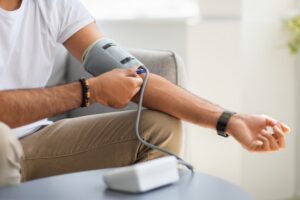Understanding the nuances of anxiety and depression is more important than ever. These conditions affect millions worldwide, yet they are often misunderstood. While they can occur together, knowing the difference between anxiety and depression is the first step toward finding the right support. As we look at 2025, new trends are shaping how we approach these challenges, from digital therapies to personalized treatment plans. This shift highlights a growing focus on accessible and effective care, making it easier for individuals to seek help and manage their mental well-being. As these conditions evolve, staying informed is crucial for navigating a changing landscape. Visit the best Mental Health Clinic in Brooklyn at Doral Health & Wellness, or log on to www.doralhw.org.
The Core Difference: Anxiety vs. Depression
Many people use the terms anxiety and depression interchangeably, but they are distinct conditions with unique symptoms. Grasping this distinction is vital for accurate diagnosis and effective treatment. A behavioral health specialist can help identify which condition, or if both, are present.
What is Anxiety?
Anxiety is characterized by intense, excessive, and persistent worry and fear about everyday situations. It often involves repeated episodes of sudden feelings of intense anxiety and fear or terror that reach a peak within minutes (panic attacks).
Common symptoms include:
- Feeling nervous, restless, or tense
- Having a sense of impending danger, panic, or doom
- Increased heart rate
- Rapid breathing (hyperventilation)
- Sweating and trembling
- Trouble concentrating or thinking about anything other than the present worry
What is Depression?
Depression is a mood disorder that causes a persistent feeling of sadness and a loss of interest. Also called major depressive disorder or clinical depression, it affects how you feel, think, and behave, and can lead to a variety of emotional and physical problems.
Common symptoms include:
- Feelings of sadness, tearfulness, emptiness, or hopelessness
- Loss of interest or pleasure in most or all normal activities
- Significant weight loss when not dieting or weight gain
- Insomnia or sleeping too much
- Fatigue or loss of energy
- Feelings of worthlessness or guilt
While anxiety is often future-oriented, focused on the “what ifs,” depression tends to involve dwelling on past events and a general sense of hopelessness about the future. It’s also common for someone with an anxiety disorder to also suffer from depression, or vice versa.
Mental Health Trends to Watch in 2025
The landscape of mental healthcare is constantly evolving. In 2025, several key trends are set to redefine how we treat anxiety and depression.
- The Rise of Digital Therapeutics
Telehealth is no longer just about video calls with a therapist. Digital Therapeutics (DTx) are becoming a mainstream component of mental health treatment. These are evidence-based therapeutic interventions delivered through software to prevent, manage, or treat a medical disorder or disease. For anxiety and depression, this includes apps that offer cognitive-behavioral therapy (CBT) exercises, mindfulness programs, and mood tracking tools prescribed by a clinician. This trend makes support more accessible, especially for those who may have difficulty visiting a mental health clinic in person.
- Personalized and Integrated Care Models
A one-size-fits-all approach to mental health is becoming a thing of the past. The trend in 2025 is toward highly personalized treatment plans that integrate various aspects of a person’s health. This means a behavioral health specialist might collaborate with a primary care physician, a nutritionist, and other specialists to create a holistic plan. Genetic testing to predict medication responses and AI-driven platforms that tailor therapeutic content are becoming more common, ensuring that treatment is as unique as the individual receiving it.
- Focus on Workplace Mental Health
Employers are increasingly recognizing their role in supporting the mental well-being of their employees. In 2025, we will see more comprehensive workplace mental health programs. These go beyond basic employee assistance programs (EAPs) to include:
- Mental health training for managers.
- Access to on-site or virtual counseling.
- Flexible work schedules to reduce burnout.
- Creating a culture that destigmatizes mental health conversations.
This proactive approach aims to address stressors before they escalate into more severe issues with anxiety and depression.
Navigating Your Path to Wellness
Understanding the trends is helpful, but taking the first step is what truly matters. If you are struggling with symptoms of anxiety and depression, know that effective support is available. The distinction between anxiety vs. depression is important, but a professional can provide a clear diagnosis and guide you toward the right treatment. With advancements in behavioral health, there are more options than ever to help you feel better.
Don’t hesitate to reach out for support when you feel overwhelmed and don’t know what to do. We encourage you to reach out to the Doral Health & Wellness Behavioral Health Department to connect with our compassionate professionals. For further inquiries, call us on +1- 718-367-2555 to get a consultation. We have some of the finest doctors psychiatrist who listen to your concerns, examine your symptoms, and create a treatment plan to improve your condition as soon as possible. If you need help learning coping methods, register your information and make direct contact with us at www.doralw.org. Visit us at 1797 Pitkin Avenue, Brooklyn, NY 11212.






